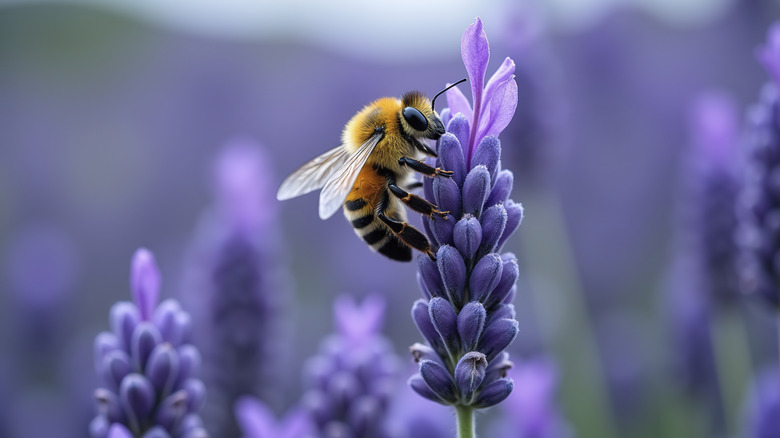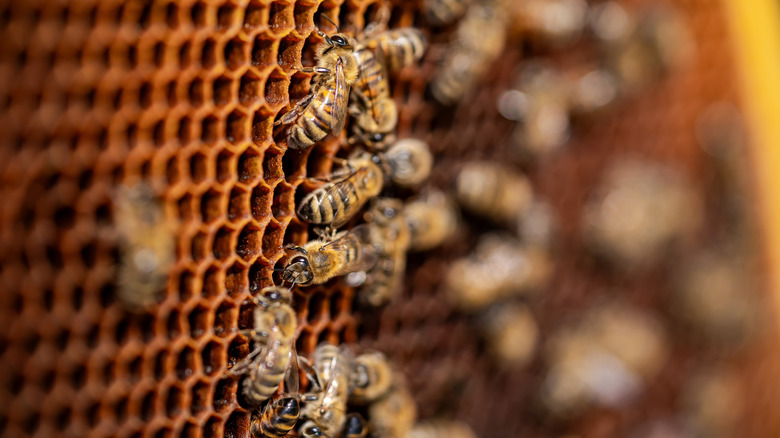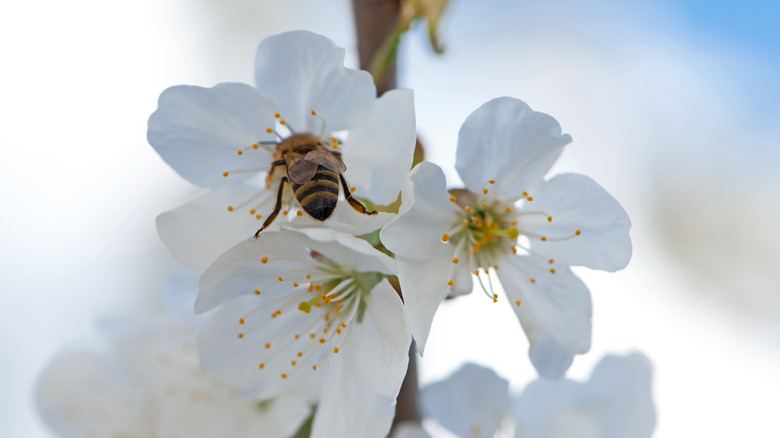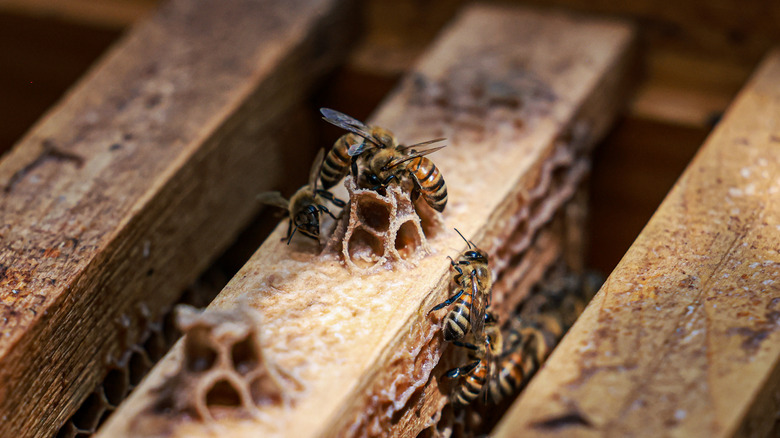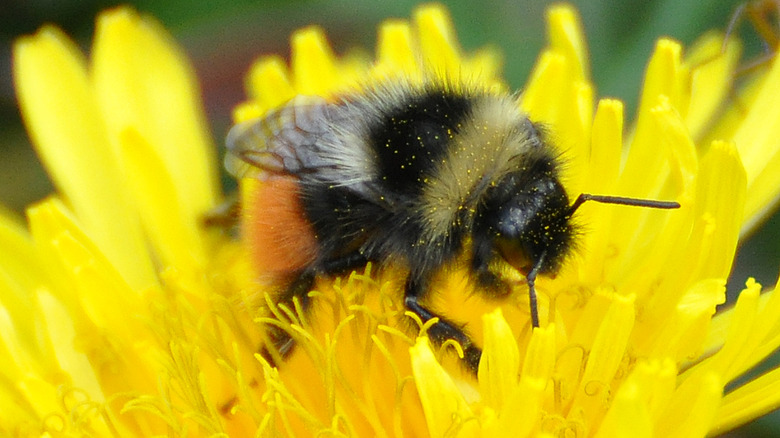What Would Happen If Bees Went Extinct?
Bees sometimes get a bad rap — stories like how we found so-called murder hornets in Washington State certainly don't help their image. But the reality is that bees are foundational to the world's ecosystems and indispensable to human agriculture. With around 20,000 species worldwide, they are among the planet's most significant pollinators, facilitating the reproduction of countless flowering plants that produce the myriad fruits, vegetables, and nuts that constitute a substantial portion of the human diet.
But there's a problem. Bee populations have been experiencing alarming declines due to habitat loss, pesticide exposure, disease, and climate change. According to a survey by Project Apis m., a non-profit dedicated to studying bee populations, 1.1 million honey bee colonies in the U.S. were lost just between June 2024 and February 2025. This trend raises an unsettlingly less-than-hypothetical question: What would happen if bees went extinct? Shortly, nothing good. The immediate impact of global bee eradication on agriculture would be profound and ripple through both the natural and human world. Crops heavily dependent on bee pollination, including apples, almonds, and blueberries, would suffer significant yield reductions.
This decline would not only affect food availability but also lead to economic losses for farmers and increased consumer prices. Beyond that, their absence would disrupt entire ecosystems, as many plant species rely on them for reproduction. Analyzing this scenario isn't just a challenging mental exercise; it can also give us insight into the future of conservation efforts and agriculture. Let's dive in.
The immediate impact on agriculture
The extinction of bees would have a profound effect on global agriculture as they are vital pollinators for numerous crops (check our guide for how bees and flowers help each other for a quick refresher), and that effect can be seen in stark economic terms, too. Researchers have estimated that in 2012, bees and other pollinators were directly responsible for as much $34 billion in fruit, vegetable, and other crop production in just the United States. Without bees, the crops that rely on them would face significant yield reductions, meaning decreased availability and increased prices for consumers.
A recent example that highlights this is the struggle of California's almond industry to keep its bee colonies (and its businesses) alive. The decline of bee populations has meant that California's almond trees — whose February flower blossoms only turn into almonds if they are pollinated — aren't able to produce the nuts like they used to. Almond trees are unique in that, whereas other flowering plants might utilize the wind or other insects to get the job done, they rely largely on honeybees for pollination. California farmers now truck in bees from out of state regularly, and finding them has become increasingly difficult.
Almonds, like apples and blueberries, are part of a group of pollinator-dependent crops whose volume of global production has risen 300% in the last 50 years, according to figures from the Intergovernmental Science-Policy Platform on Biodiversity and Ecosystem Services (IPBES). The absence of bees is already motivating growers to search for alternative (but less efficient and more costly) pollination methods, like experimenting with growing self-pollinating almond trees or robotic pollinator drones. But if bee populations continue to fall, that could shake the foundations of national and global food security, causing a sharp increase in prices for any fruit-bearing plant that needs them to pollinate effectively.
The ecological effects of bee extinction
Beyond its impact on agriculture, bees going extinct would mean the world's ecosystems are in for a shock. Without their primary pollinators, countless species of flowering plants would face serious challenges in reproducing. A decline in bee populations would result in a decline in the plants they facilitate. From there, the cascading effects would be devastating. Altering habitats for insect populations that use these plants as shelter and reducing food sources for herbivores are just some of the foreseeable consequences. Even more severely, such extreme alteration of the food webs involved in all of this would likely lead to the extinction of other species ecologically downstream.
One of the suspected culprits behind bee population declines is the continued loss of biodiversity — specifically, plant diversity. According to the U.S. Geological Survey, up to 50% of bee species are so specialized that if the plant they feed from dies, they will be forced to leave in search of food in other areas or die off, too. This is another potentially disastrous feedback loop, where each die-off accelerates the other.
Bees' absence could impact larger ecological scales, too. A recent study published in npj Biodiversity examining the impact of fertilization on grasslands found that high levels of common fertilizers led to nearly a 50% reduction in pollinator numbers and a drastic decrease in floral diversity. Apart from altering habitats as a result, this dynamic could intensify the effects of bee extinction and contribute to the destabilization of whole ecosystems. Overall, the chain reaction would involve disrupting plant reproduction, diminishing food sources and habitats for (and leading to the potential extinction of) various species, all leading to broader ecological imbalances.
Can we survive without bees?
While bees going extinct would have massive ramifications on the global food network, it likely wouldn't result in famine. Most of our caloric intake as a species comes from wind-pollinated cereals like wheat, rye, corn, and barley, which would buffer the impacts of fruits and other sources of nutrition either becoming prohibitively expensive or completely unavailable. But the increasing pressure to find ways to adapt to this worst-case scenario is already being felt by all actors within the agricultural industry.
So, what options does that leave us in the event of worldwide bee extinction? Well, pollination wouldn't simply come to a halt. Flies, butterflies, moths, beetles, birds, and bats all play a similar role to bees, accounting for up to half of the pollination visits in plant ecosystems. But the effectiveness of these animals varies , and while an individual non-bee insect or bird might outperform an individual honeybee, on average, they are just not as consistent, so they likely wouldn't be able to fully compensate for the loss of bees as a whole.
Technological innovations might be part of the solution. Researchers in the United Kingdom have found that fertilizer mixes that don't include nitrogen result in treated land retaining a comparatively high number of both pollinators and flowering plants. And companies like BloomX have developed tools designed to mimic the movement of bees' wings, triggering the release of pollen. Rethinking our approach to agriculture may need to be part of the equation as well, with multifunctional landscaping — a process of developing sustainable and diverse practices and management of natural ecosystems — beginning to catch the attention of an increasing number of individuals.
Saving the bees: Is it possible?
Bees might be in trouble, but before we accept that they are irrevocably on the way out, it's more helpful to think about what can be done to save them. Recognizing their critical roles in pollination, ecosystem health, as well as the human economy and food network, various initiatives are being implemented to combat their decline. As of August 2024, for example, 12 U.S. states, including Washington, Colorado, Nevada, and California, have enacted laws limiting the use of neonicotinoids — a class of pesticides known to adversely and severely affect bee populations. Such measures aim to reduce bee mortality rates and promote healthier pollinator environments.
Habitat conservation is another approach that has emerged as part of a larger strategy to save the bees, with organizations like the Xerces Society for Invertebrate Conservation advocating for the preservation and restoration of bee habitats. Its efforts have also helped two of the most fragile bee species — Franklin's bumble bee and the rusty-patched bumble bee — receive protection under the Endangered Species Act. And by creating and maintaining flower-rich environments, these kinds of efforts benefit a wide range of pollinators, not just bees. Government programs, like the U.S. General Services Administration's Pollinator Protection Initiative, and educational outreach programs to raise awareness around the issues bees face will also be crucial to getting their populations back to a healthy place.
Collectively, legislative measures, habitat conservation efforts, and community initiatives represent a multifaceted approach to preventing bee extinction. By addressing the threats they face, these indispensable pollinators could someday turn into one of humanity's greatest nature success stories (like that time we came together to fix the ozone layer). Just don't forget to celebrate May 20 — the day the United Nations has officially designated World Bee Day.
